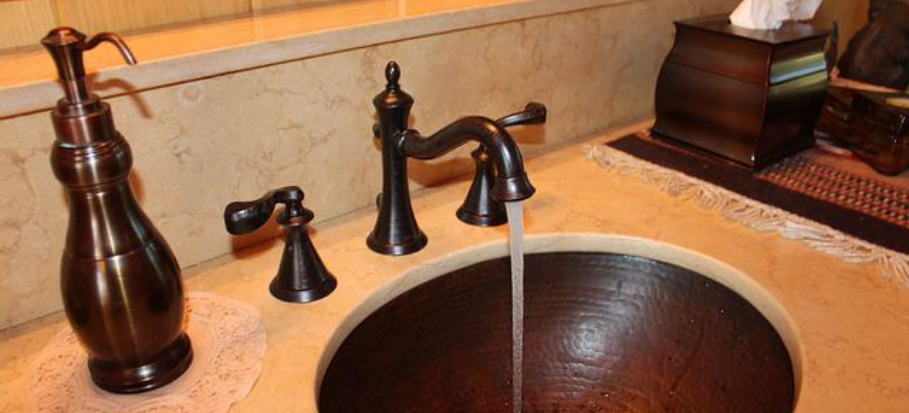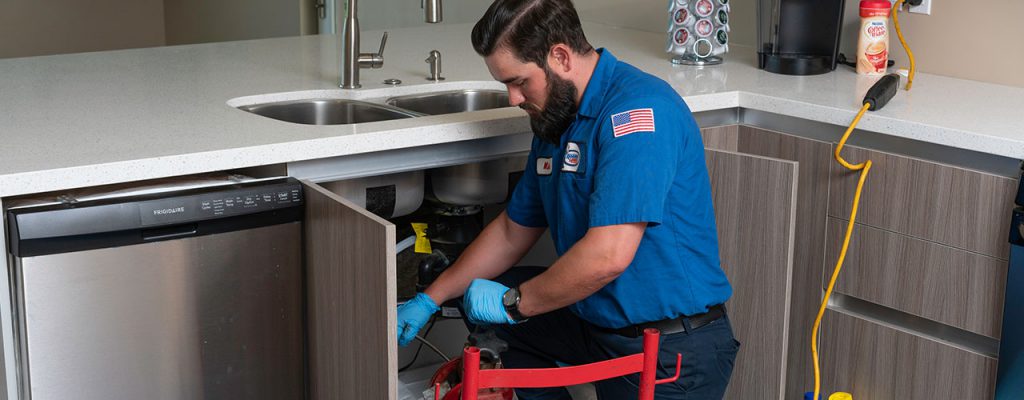Proven Ways to Handle Plumbing Issues in Older Homes
Proven Ways to Handle Plumbing Issues in Older Homes
Blog Article
They are making a few great points relating to Plumbing Problems In Old Homes in general in the content down the page.

Older homes frequently include appeal, character, and history, but they can additionally bring a host of plumbing issues. Whether you're dealing with maturing pipes, low water pressure, or leaks, knowing how to address these usual issues is critical to preserving a secure and functional home. In this overview, we'll check out the typical pipes challenges dealt with by older homes and offer practical options to keep your plumbing in leading shape.
Recognizing Typical Plumbing Problems
Aging Pipelines
One of one of the most common problems in older homes is maturing pipes. Relying on the age in which your home was constructed, the pipes may be made from products that have worn away in time, such as galvanized steel, cast iron, or even lead. These products can corrode, become weak, or develop leaks, bring about water damage and prospective carcinogen.
Water Quality Testing
Older pipes can affect the high quality of your water. Conduct a water quality examination to check for pollutants such as lead, corrosion, or various other pollutants that might be introduced by aging pipes.
Solutions for Usual Pipes Issues
Replacing Aging Pipelines
If your home has old, weakening pipes, take into consideration changing them with modern materials like copper or PEX. This can be a considerable financial investment, but it will stop future concerns and boost the safety and security and reliability of your pipes system.
Dealing With Low Tide Pressure
To take care of low tide stress, beginning by cleansing or changing old components and getting rid of mineral build-up in the pipelines. If the trouble persists, it may be needed to change sections of corroded pipes.
Fixing and Changing Dripping Pipelines
For small leaks, you can use pipe clamps or epoxy putty as a momentary solution. Nonetheless, it's ideal to replace dripping pipelines entirely to stay clear of more damages.
Upgrading Components
Updating old components to contemporary, water-efficient designs can improve your home's plumbing efficiency and minimize water consumption. Look for components with the WaterSense tag for the best efficiency.
Dealing with Pipeline Rust
If your pipes are corroded, changing them with corrosion-resistant materials like copper, PVC, or PEX is the best solution. Normal assessments and water high quality upkeep can aid stop better rust.
Low Water Pressure
If you're experiencing low tide pressure, it could be due to natural resources, rust inside the pipes, or old fixtures that are no more operating effectively. This can be a major inconvenience, especially in locations like showers and sinks.
Leaking Pipes
Leakages are one more frequent concern in older homes, usually brought on by corroded or worn-out pipelines. Even tiny leakages can result in significant water damages, mold development, and increased water bills otherwise attended to quickly.
Outdated Components
Outdated pipes fixtures such as taps, bathrooms, and showerheads not only look old yet may additionally be less reliable, susceptible to leakages, or incompatible with modern pipes standards.
Pipeline Corrosion
Rust is a common trouble in older pipes, specifically those made from galvanized steel or cast iron. Rusty pipelines can restrict water circulation, cause staining, and eventually cause leaks or pipe ruptureds.
Evaluating the Problem of Your Plumbing
Checking Visible Pipes
Beginning by examining any kind of visible pipelines in your house, such as those in basements, crawl spaces, or under sinks. Seek signs of rust, leakages, or rust, which can suggest underlying concerns.
Checking for Leakages
Look for leaks by checking locations around faucets, bathrooms, and under sinks. You can additionally monitor your water meter before and after a duration of no water use to discover surprise leaks.
When to Call an Expert
While some pipes concerns can be handled with DIY remedies, there are times when it's ideal to hire a specialist. If you're dealing with major leaks, considerable corrosion, or are unclear about the condition of your pipes, a qualified plumber can offer skilled assessment and repair.
Preventive Maintenance Tips
Normal Evaluations
Frequently check your plumbing system for signs of deterioration. Catching concerns early can stop expensive repair work down the line.
Water Stress Regulation
Guarantee your water stress is within the suggested variety to avoid emphasizing your pipelines and fixtures. A plumbing can set up a pressure regulator if needed.
Water High Quality Upkeep
Install water filters or softeners if your water high quality is poor. This can shield your pipelines and fixtures from damages brought on by difficult water or impurities.
Proactive Pipeline Replacement
If your home has older pipes, consider positive replacement prior to significant concerns develop. This can conserve you from emergency repair work and water damages.
Verdict
Dealing with plumbing issues in older homes calls for a combination of watchfulness, precautionary upkeep, and prompt upgrades. By understanding the usual difficulties and knowing when to seek specialist assistance, you can guarantee your plumbing system remains functional and reputable for several years ahead.
Common Plumbing Issues in Older Homes and How to Fix Them
Owning an older home in Australia comes with its unique charm and a set of challenges, especially when it comes to plumbing. The Sunshine Coast has many older properties that can harbour plumbing problems that aren t just inconvenient but potentially costly. Here s a look at some common plumbing issues in older homes and expert advice on how to handle them.
Outdated Piping Materials
Many older homes were built with galvanised steel, cast iron, or even lead pipes, materials that are far from ideal by today s standards. Galvanised pipes are prone to corrosion and clogging, while lead pipes pose serious health risks.
How to Fix:
Replacing old pipes is a job for a professional. Upgrading to copper or PVC piping not only enhances water quality and flow but also increases the property s safety and value. If you suspect your home has outdated materials, a licensed plumber can conduct a thorough inspection and recommend the best course of action.
Corrosion and Pipe Degradation
Over time, exposure to water and minerals can cause pipes to corrode, leading to leaks, bursts, and water contamination. Corrosion is especially common in homes over 50 years old.
How to Fix:
Regular inspections can catch early signs of corrosion. If corrosion is found, the affected section of piping often needs to be replaced. For homes with extensive corrosion, a complete plumbing overhaul might be necessary. It s crucial to consult with a plumbing expert to understand the extent of the issue.
Tree Root Intrusion
Older neighbourhoods usually have mature trees whose roots can intrude into pipe lines, causing blockages or damage. This is particularly problematic for sewer lines, where roots seek out water sources.
How to Fix:
A plumber can use a specialised camera to inspect sewer lines for root intrusion. If roots are a problem, methods like root cutting or hydro-jetting can clear the obstruction. In severe cases, part of the pipe may need replacing. Consider root barriers around the piping to prevent future issues.
Inadequate Water Pressure
Low water pressure in older homes can be due to various factors, including corroded water lines, sediment build-up in pipes, or outdated fixtures.
How to Fix:
First, check if the low pressure is isolated to one area or throughout the house. Replacing old fixtures can sometimes resolve the issue. However, if the problem is more widespread, it might be due to sediment or corrosion. Flushing the system or replacing the affected pipes usually restores normal pressure. Again, a professional assessment is advisable.
Outdated Fixtures
Older homes often feature fixtures that are not only visually dated but functionally inefficient. This includes everything from toilets and taps to showerheads and washing machine hoses.
How to Fix:
Updating these fixtures can improve both water efficiency and the aesthetic appeal of your home. Modern fixtures are designed to conserve water, which can significantly reduce your water bill and lessen your environmental impact.
Conclusion
Maintaining the plumbing in an older home requires a proactive approach. Regular checks and updates are key to preserving these beautiful properties. If you re facing plumbing issues in your older home, it s best to call on experienced professionals like Green & Gold Plumbing & Gas. With the right expertise, even the most daunting plumbing problems can be resolved, ensuring that your home s character is maintained while its functionality is enhanced.
https://gandgplumbing.com.au/common-plumbing-issues-in-older-homes-and-how-to-fix-them/

We were brought to that write-up about Common Plumbing Challenges In Old Buildings through a good friend on a different blog. Appreciated our write up? Please share it. Let someone else check it out. I enjoy reading our article about Main Plumbing Issues Found in Old Houses.
Information Report this page